|
Most of you have been with me from the start so I hope there is a feeling of celebration as That Way Madness Lies… makes its broadcast debut on PBS. Although the theatrical release and the festival circuit was great, this is the way the film will be seen by the most people and be an agent for change. I have to express my gratitude to all of you who have helped me along the way and have shared the film. The real work is just beginning. Below you can read an email that was sent to the Columbia Global Mental Health Programs mailing list yesterday: Premiering on PBS WORLD Channel: That Way Madness Lies Tune in for the upcoming premier of That Way Madness Lies, a documentary by Columbia Global Mental Health Artist in Residence, Sandra Luckow. Sandra's brother, Duanne, has serious mental illness. The US mental health system is broken. The result is tragedy. Told in part through video recordings from Duanne's iPhone, the film reveals the devastating nature of repeated hospitalizations and encounters with police for individuals living with severe mental illness. That Way Madness Lies has won numerous awards at domestic and international film festivals, and it continues to bring together educators, advocates, and individuals with lived experience to champion the reforms that are urgently needed to improve mental health care and treatment. The Columbia Global Mental Health Programs is proud to have hosted Sandra as an Artist in Residence and humbled to continue to share the story of Duanne. Together, we are committed to advocating for high quality care and treatment for those with mental illness. That Way Madness Lies will broadcast on PBS World Channel on Wednesday, April 21, at 8:30pm Eastern Time and subsequently at various times on your local station.
To watch the broadcast on PBS WORLD Channel, find your local station here. Don't have access to PBS World Channel? The PBS version of the film is also streaming online here.
0 Comments
THAT WAY MADNESS LIES…was just nominated for “Courage in Filmmaking” by the Women Film Critics Circle and in just a few short days, my film will make its theatrical debut in New York and Los Angeles as a First Run Features Release. It is surreal that this time is actually materializing. Even though in the last 8 years, I've spent almost every waking hour with this endgame in mind, there were plenty of moments when it felt that the film playing on a big screen in a real movie theater was emphatically NOT going to happen. What has been a constant however, is how hard, how unlikely, how heartbreaking, and how infuriating this journey could be on every level. And yet, here we are, perhaps a little battered, a little sore, a little scarred, but arriving with an optimistic eye to the future and a deep feeling of pride for having chosen the road less traveled. And I say “we” because most of you reading this blog, have been with me personally and professionally throughout this journey. I'm certain I'm still standing (personally and professionally) because of all of you and your unflinching help. I'm cognizant that it is the result of so much generosity, faith and tenacity that has brought us to this moment. A few days ago a NYWIFT Women Crush Wednesdays Podcast featured me talking about making THAT WAY MADNESS LIES…. More than any other interview I've given, it focuses on the process of making the film than it does about the mental health system and its flaws. (Click the image below to go to the podcast.) A very good article came out in Psychology Today that addresses the important policy issues and advocacy. (Click the image below to go to the interview.) If you are in Los Angeles or New York from December 14th to December 20th, 2018, or if you can get to either one of these cities, here is where you can score some tickets at Cinema Village in New York or Laemmle Monica in Los Angeles. There are 5 shows a day at 1:00; 3:00; 5:00, 7:00; and 9:00pm. I will be doing Q&As in New York on the 14th, 19th, 20th at the 7pm shows While I know this is the real beginning of my film’s life in the world, it is also a time of closure for me. I long to release it from my daily efforts and begin something new. But because my life and the story in the film are so enmeshed, my reality doesn't end with the last frame of film. I've known for a while that in order to move forward, I needed a ceremonial quest that would allow me to process, and, perhaps, exorcise the struggles of the past eight years. The Inca Trail to Machu Picchu has always been on my bucket list because of my connection to Yale, Hiram Bingham and my Indiana Jones’ thrill for danger and adventure. I could never have predicted that this trek would be such a metaphor for the experience of the last eight years, or such a salve for the wounds inflicted. During this past year, a family from Texas who struggles with severe mental illness contacted me about the film. We bonded profoundly. To my great surprise they insisted on sending me $1000.00 to do something for self care. I tried to convince them to give the money to the film and get their tax break. I still hear the father’s voice on the phone insisting,” Yeah, that’s not how I like to do things. I want it to go directly to you, for you.” Their generosity prompted the first payment for the trip. It did not take much to convince Steve Knepper, who is featured prominently in the film, and has been Duanne and my childhood friend for over 40 years, to accompany me. I didn't share with Steve the secret purpose of this trip, but I don't think he was surprised watching me battle so many emotions. There were many exquisite moments on this trip, but for the purposes of this blog, I'll tell you only the ones that relate to the experiences in the film. Hiking the Inca trail is not a requirement to get to Machu Picchu. One can take a bus to the Sacred Valley and then a train and another bus to arrive at the Lost City of the Incas. And the actual hike is only 26 miles. But no matter how one prepares and arranges for accommodations, it's not easy.
The first couple of days were glorious! Glorious vistas and ruins and discussions among our guide and seven other hikers who appreciated every moment of this shared experience. I could feel the physical exertion begin to excavate my buried emotions. I couldn't look at a vista in the Andes, a babbling brook or the perfectly cut Inca stones without my eyes unexpectedly welling up and leaking. So, in order to deflect attention away from being emotional, I resorted to my go-to defense: humor. I became my own fool, and like King Lear’s, I, at once, revealed my vulnerabilities and tried to conceal them. I joked with the porters by putting one of their packs for five seconds and I showed anyone who was interested, my Freshette, a device that allows women to pee standing up. Talk about empowering! It rained hard the night before, we started out for Dead Woman’s pass on the third day, and I’m sure Steve will attest that I was crabby. I didn’t want anyone to see me physically struggling nor did I want encouragement. Kind words would feel like pressure as well as a reproach that I should be doing better. But, I certainly didn’t want to be left alone either. I didn’t want to hold Steve back who longed to go full-out physically. At one point on the trail, he left all the hikers behind and ran with one of the porters. To each their own…my goals were a little more basic... like breathing. Our skilled guide, Miguel, a Cusco University graduate, who had grown up in the foothills of the Andes, was going to bring up the tail of our group. On the trail and at meals we had had substantive talks about our lives and I spoke to him in Spanish. My plan was to learn how to attack this mountain without him knowing about the storm that was brewing in my head and heart. The porters and guides have a strategic technique for the uphills that simply isn't in my nature - a patience, a fluid, but consistent, slowness. They are like soft water eroding a rock. Years before, I had to learn about pacing when I ran my first marathon and that felt excruciating. This was “pacing” on steroids.
 Looking down from the top of Dead Woman’s Pass. Looking down from the top of Dead Woman’s Pass. There is not an official count (that I know of), but is estimated that there are around 6000 stairs to Dead Woman’s Pass. When I should've been fighting an ear-worm of "Stairway to Heaven" as I climbed, but I was flogging myself with medley of the worst moments of my life since 2010. And, for good measure, a voice inside my head was castigating me by pointing out that while I was hiking the famed Inca Trail, my brother was homeless on the streets of Portland, Oregon. While it felt hard physically, I welcomed the tangibility of the struggle that was not present with my emotions. I did not feel “sick." But, about half an hour from the top, Miguel took an oximeter out of his backpack (which to my surprise was a venerable medicine chest) to measure the oxygen saturation in my blood. Normal readings are usually between 95 to 100. Anything under 90 is considered low and I was clocking in at 77. We literally stopped walking for 5 minutes to get my count on the monitor to read 80. Then Miguel said to me, “Let me carry your backpack. It will help.” He might as well have stabbed me. “No, no, that’s okay. No need. Thanks.” Now, I could barely breath because I was trying to stuff down tears. I was baffled by this tsunami of emotion. What the hell? I pushed on for a couple more minutes and again Miguel requested my pack. Without stopping, I snapped, “No, I got it.” Then, I realized I didn’t “have it." As the tears streamed down my face, I unbuckled the 15 pound pack and handed it to him. We were both stunned by my reaction. I apologized and blamed the altitude. One could interpret this moment as me finally accepting help, a literal unburdening of what I carried and a metaphorical letting go of control. But that wasn’t the case: an image from my movie flashed before my eyes. Duanne was on the premises at the same moment I was banishing Rita from the house he once owned. The behavioral police unit took him to a homeless shelter with only a backpack. It was the beginning of him living on the street and under bridges. I spent nights looking for him in downtown Portland among the 6000 people camped out, trying to make up for what I had taken from him. On the trail, at that moment, I realized I might as well give Miguel my backpack: I had failed already once. Now, just put one foot in front of the other — move forward. At the top of Dead Woman’s Pass, several of my fellow trekkers waited for me, despite the sudden drop in temperature with the clouds rolling in. I had mentioned to them that I wanted to do something ritualistic as a tribute to my Mom, but my heart wasn’t in it and we had to hurry because there were several thousand feet to descend over the course of three miles to get to camp before dark. So, perhaps necessity created the most appropriate tribute: I looked back at the trail we had just ascended, put on some lipstick (my mother's fix for almost anything) and marched toward camp. That morning, before beginning Dead Woman’s Pass, Miguel gave us a heads up as to what to expect for the rest of the trek. He said day 3 (the pass) would be “challenging;” day four would be “unforgettable;” and day five (our day in Machu Picchu) “unique.” I thought he had probably gotten his days mixed up. The day at Machu Picchu had to be the unforgettable day, not the one before. After all, English was his third language after Quechua and Spanish. He was our guide for a reason. The vistas on the fourth day took our breath away more than the altitude. The beauty was almost painfully exquisite. With my defenses down, my eyes welled up at almost every view. It seemed our final camp was on top of the world. We were above the clouds and looked down on Mt. Machu Picchu. It was Thanksgiving night and we were treated to the most spectacular and “unforgettable” sight. Above the clouds, with a 360 degree view, we saw an intense painterly sunset in the west and a full moon rising over a snow-capped mountain in east. Our porters brought tea and cocoa to the hill above our camp where we watched as darkness fell. Steve and I stayed behind as people dispersed to get ready for dinner. After a period of silence, I said to him, "I wish Duanne could see this…” We wondered if that could ever be a possibility? Not likely. Then through a gush of tears I told him about my journey up Dead Woman’s Pass. The next morning, as we were heading out, three llamas were taking in the view. Maybe it was the lack of oxygen, but I couldn’t help but think they were Duanne, Steve and me. We got our first view of Machu Picchu around 3:30pm when we arrived at the Sun Gate, although it was still another hour of hiking to actually arrive. There are very few words I can find to express the feeling of seeing it for the first time, regardless of how much you have prepared for it. It is comical how, despite all of the other people surrounding you, it feels as if it is YOUR discovery. Our assistant guide, Hector said that, for the Incas, the Trail was a spiritual pilgrimage to prepare its visitors to arrive at the holy city of Machu Picchu. And because there are easier ways to get to Machu Picchu, it should perhaps be the same for the modern hiker. I certainly had intended and expected the trail to allow for reflection of what life had thrown at me as well as the making of my film, but I did not anticipate such immersion and transformation with every step. Whereas Steve said he had come to Peru to get away from his everyday life, the trek allowed me to profoundly connect and process what had happened in my life and by extension the film. I found meaning and understanding in everything. I kept thinking that we don’t really know the purpose of Machu Picchu or how or why the Incas built it and we certainly don’t understand mental illness or those who suffer from it. Because the Incas had no written language, we can only guess as to how they cut and fit all those rocks together to build beautiful structures in the inaccessible and earthquake prone Andes. It seems crazy that they would build this city, but it is also wonderful. And because we don’t understand it, there are crazy theories to explain it — my favorite being that aliens built most of the Empire before the Incas inhabited it and staked their claim. Our approach to understanding mental illness and the actions of those afflicted are striking similar.
To come full circle, when I got home, I posted a few photos on Facebook about the beginning of our time in Peru that did not include the trail. Duanne saw them and wrote something that has meaning only to me. His posts of late have been word salads, but this one, under a photo of Steve and me, made reference to a “new Johnny and Fisky from Mt. St. Helens.” Duanne and I used to play “army buddies” in the woods surrounding our cabin on Mt. St. Helens. He was Johnny and I was Fisky. (I wish I knew where that name came from, because I always pleaded to be Johnny). These childhood games in the woods were some of the best times of being with my brother. The memory felt like a gift Duanne gave me when he saw the pictures of this Peruvian journey. This trip allowed me to reflect, process, cleanse and despite the altitude truly breathe through so much of what I had ignored in order to just push through in the moment. It was hard and healing and I would do it again in a heartbeat. I wish you all much peace and happiness during this holiday season and for the upcoming year. Please continue to get the word out about the movie and use it as an agent for change. Happy Holidays.  I am so pleased to announce that First Run Features has picked up "That Way Madness Lies.." for distribution. This is the first step toward getting the film seen by a wider audience. It will open theatrically on December 14, 2018 in New York and Los Angeles. Many of you have been here from the start with the very first Kickstarter campaign in June of 2011. The film would not have made it to this moment if not for your belief, help and support. I hope you will accept a token of my gratitude by clicking here, or anywhere in the image below, to view the film. This image is a screen capture of the eblast was sent out today to 23K members of the International Documentary Association because we are in the midst of “Award Season.” I was raised to believe that awards should be bestowed without a campaign and it should be about the work. It is so against my nature to be campaigning for an award because it feels like the work cannot speak for itself. And maybe it cannot. And it kills me to have to pay money to even be considered for some awards… but it is the nature of this competitive business and what one must do. Everyone must do this necessary evil for the survival of the film, but it feels tainted and I feel like a hustler/schuckster/imposter/con artist etc, because is so far removed from the actual work.
Also, I am sure a lot of my trepidation has to do with the personal nature of the film. How ironic is it that I would rather have the world glimpse into the tragedy of my family’s story and my particular vulnerabilities than have to solicit in this manner. But I am committed to doing what is necessary for many things even when it makes me uncomfortable, I am putting it out there. If you know anyone that votes for documentaries during this season, please let them know about THAT WAY MADNESS LIES… and tell them about how you have been supportive and on this journey with us. I hope that you will enjoy the Autumn. “I finally had an orgasm and my doctor told me it was the wrong kind.” So said a bewildered young woman in the 1979 movie MANHATTAN during a Museum of Modern Art cocktail reception to navel-gazing urban sophisticates. Issac (Woody Allen) responds with “You had the wrong kind? Really? I’ve never had the wrong kind. Ever. My worst one was right on the money.” The past six months have set the stage for me to be all three of these characters — the woman, the unseen doctor and Issac — inside of my head, of course. But we are not debating types of orgasm but rather my work’s success. How do you measure success? Is it the right kind of success? And what kind of unappreciative, voracious person am I to question ANY kind success? It’s a Pandora’s Box of questions that has kept me up at night thinking about my work and the impact I’d like it to have. I am loathe to appear ungrateful or entitled. According to my Facebook pages — my personal page, SHARP EDGES: the original Tonya Harding page, and THAT WAY MADNESS LIES… page — the last six months' worth of posts make it seems that I’ve had nothing but success since the beginning of my career as a filmmaker and production teacher. SHARP EDGES, the film I made 32 years ago for my senior thesis, has had an incredible run. The last six months have seen Allison Janney win an Oscar for a performance taken from SHARP EDGES. And a deal struck with NEON — the film distributors of I, TONYA — for a theatrical run of SHARP EDGES in New York and Los Angeles leading to availability on world-wide streaming venues. Then to top it off a crazy-good review in Variety, and now SHARP EDGES is on Hulu. I’m on an amazing ride which I’m struggling to navigate and enjoy. And at the same time, maybe I’m trying too hard to manage and evaluate. It seems to be one of my life lessons. However, the nasty variables of luck and timing haunt me. I find myself questioning the “kind” of success I’m experiencing. There are reasons that SHARP EDGES has had such continued success. The obvious reason is because of the 1994 scandal that shot Tonya Harding to outrageous infamy, and, of course, now the 2017 movie, I, TONYA. But it is also true that I, TONYA, without SHARP EDGES would look and sound very different. Why does this matter to me? My measure of the film’s success and its impact isn’t based on these recent events of good fortune. For me, the measure is found in the impact the film had during the time it was made, and the framing it provided for the 1994 scandal eight years later. SHARP EDGES was the first film that Yale University accepted as a senior thesis and it won the most prestigious award given at graduation for the performing and creative arts. Its merits relied on craft and a well told story, not infamy and scandal. And at that time… the world, the industry and the university were spheres in which women and stories about women were rarely recognized. The film crucially opened the door to other films to be accepted and recognized as the culmination of one’s studies at Yale. After 1987, the film appropriately faded from people’s memories. Then in 1994, as the FBI announced that they were investigating Tonya and those close to her for the attack on Nancy Kerrigan, the film gave context to the caricatures created by the tabloid media. I went to CBS 60 Minutes with SHARP EDGES, and we did a segment entitled “My name is Tonya Harding.” The piece allowed people a more nuanced view of the personalities involved. I recently did a podcast for New York Women in Film and Television’s Women Crush Wednesdays that recounts the film’s trajectory. My interview starts at 14:00 minutes. What I have learned from this experience is that the success of SHARP EDGES, is mercurial. It is not something that can be forced or predicted. It is what it is. Showing clips from it on 60 Minutes led to my film BELLY TALKERS, and BELLY TALKERS led to teaching at Yale. During the first ten years of my teaching, when the notoriety of the scandal lingered, some students felt they could not possibly have the “luck” I had had in choosing subjects. It was hard to convince them to look beyond the scandal and at the film and to look at the story itself. A large part of the success of the film was my long relationship with the subjects and my life-long commitment to figure skating. Ten years after the 1994 scandal, students started seeing SHARP EDGES as it was originally intended. And it began to influence their work as I had hoped. Without the opacity of scandal, they could see more clearly the advantage of making a film that has a personal and emotional connection. Several years ago, a former dean of the School of Art at Yale, desperately wanted to fire me. The politics of academia can be brutal. This dean sought to use my long history and work at Yale against me. He wrote: “It is time you definotively [sic] cut the remnants of the ombilical [sic] cord once attaching you to Yale and continuing to haunt you like a phantom limb.” This sentence cut into me when I first received it. It had the power to transform an achievement into shame and leave me feeling exposed. But by staying focused and invested in my students’ production work, I endured. This May, NH Docs 9 (New Haven) presented a retrospective of my work and celebrated more than 20 years of my teaching at Yale. That retrospective included SHARP EDGES. For the second time in four years, a film made by one of the students in my class won the state-wide student competition. Despite 35 positive student evaluations during this academic year, I also received an evaluation that said, “Sadly, she is probably the worst professor I ever had at Yale.” Even one evaluation like this can disrupt my equilibrium and disproportionally erase the positive ones. The task, perhaps, is to weigh success over the long term, like the stock market, and to weigh it quantitatively. So, I still struggle with which films receive notice and for what reasons. Then I feel guilty for creating what a friend of mine calls “high class luxury problems.” It’s like that scene in MANHATTAN. Then, there’s those old demons — timing and luck that creep into the mix. They are mischievous pranksters who delight in chaos and destroying my equilibrium. I spent eight years making THAT WAY MADNESS LIES… and I continue to live the story outside the confines of the film. It was painful to make; exposing, sad and heartbreaking. So, I self-bargained a set of expectations that pulled me through. I convinced myself that this time my Samson-like effort would be rewarded in tangible measurements of success. But, again, what kind of success? MADNESS is unique. It shows our family dealing with my brother’s illness while traversing the broken mental health system. It shows copious archival family footage. And, what is most striking are the scenes of my brother’s first-person-point-of-view of his psychosis in real time. I lay it all out in a raw and straightforward way. Because I put all of this in the film, I convinced myself that it would bring quick change to a broken mental health system. I thought it would, ultimately, help my brother. My expectations, impatience and ambitions for the film have broken my heart. When a film is finished, in order to gain wider distribution (particularly a documentary), it must play at film festivals. There are literally thousands of festivals, each with a hefty application fee. However, the gatekeepers to distribution frequent only a handful of festivals with any regularity. I wanted to premiere THAT WAY MADNESS LIES... at Sundance, the foremost festival in the USA because my film BELLY TALKERS had shown there. But MADNESS was not ready by the application deadline. Neither was BELLY TALKERS near finished when I had applied, but that film had had the backing of Harvey Weinstein (that was decades before his scandal that would engulf him). So, I had similar expectations for THAT WAY MADNESS LIES…. However, Sundance requires a world premiere and statistics show that you have a better chance of getting into Harvard than you do at Sundance. I did contemplate waiting a year before submitting “MADNESS” but waiting another year wouldn’t improve my odds of getting in. I did not need a whole year to finish and there was a pressing reason for getting the film seen as soon as possible. At the film’s end, my brother is released from the Western State Hospital. By the time the film was ready to be be seen, he had been arrested and sent to the state hospital again, twice. Once people saw the film, anywhere, I was certain there would be a call to action. There would be a revolution towards changing the mental health system. In the process, the film would receive world-wide distribution and my brother would receive the help he most desperately needed. The obvious place to start was the Portland International Film Festival because the story takes place in Oregon. But when the film was rejected, it felt like a slap in the face. How could it be rejected? This story and the realities it reveals affects each and every citizen of Portland whether they realized it or not. But we live in a moment of time where people are besieged. I did not anticipate that by the time the film was finished, we, as a country, would have an administration and culture in utter chaos. Everyone, distracted by the fireworks, spectacle and too fatigued by having to fire-fight, could not, in addition, take on the systematic failures presented in THAT WAY MADNESS LIES… His first week in office, Trump signs executive order rescinding Obama Era law that revokes 2nd Amendment rights to mentally incompetent and involuntarily committed individuals Inexplicably, during Trump’s first week in office, he signed an executive order that endangers my brother’s life as well as my own. It rescinds a law that denies 2nd Amendment rights to mentally ill individuals involuntarily committed, and those who meet very specific criteria. So forget the legalese: it means that deeply disturbed people are entitled to firearms. How was Trump to know that Parkland could have been prevented? There has been almost no mention of this executive order in the aftermath of recent mass shootings. Instead, some mental health professionals and advocacy groups try to minimize the relationship between the severely mentally ill, who are prone to be a violent danger to themselves and others, and mass shootings. They work the numbers because they don’t want mental illness to be further stigmatized. One organization, and the same one that named me their 2018 Artist-in-Residence, wrote on its weekly blog of May 18, 2018: “There is no doubt that something is seriously wrong with someone who opens fire with the intent to kill innocent people. But don’t be fooled. The vast majority of individuals with mental illness are not violent. They are, in fact, more likely to being victims rather than perpetrators of violence. Using that same line of reasoning, the vast majority of individuals who own guns are also not likely to open fire in a school yard and are not likely to kill anyone over the lifetime of owning a gun. So, what’s up?” -and- “These mass shootings are heinous, dramatic events. They also happen to be statistically infrequent – even though it doesn’t seem that way at the moment. Nassim Taleb calls these kinds of occurrences black swan events. These rare events have outsized impact and are extremely difficult to prospectively predict.” But there is a connection, and all the defenses in the world and manipulations of percentages, etc, do not ease the mass trauma and mass impact. “What’s up?” and “Don’t be fooled!” Seriously? What’s up is that no one should be fooled by an undisclosed agenda here. I can promise you this: every time there is a mass shooting, anyone connected to the untreated and severely mentally ill perpetrator is not crunching numbers or controlling optics to manipulate an agenda (unlike the NRA and their apologists). Instead, they have been trying for years to get their loved one help. THAT WAY MADNESS LIES… shows us exactly how someone with no prior history of violence or who never before met the criteria, could be the next shooter as their conditions systematically worsen. For that reason, I expected a more immediate embrace of the film for what it illuminates. Eventually, I did engage the Northwest Film Center to show the film outside of the festival. The audience reaction at the Portland Art Museum screenings exceeded my hopes and expectations. I was taken aback by the number of people who told me at the screening, or wrote to me after, that my film matched their own encounter with the mental health system. The only marked difference was that I had footage as visual proof. This gave me tremendous hope and a mandate. Understanding the problems and seeing them unvarnished was our power. Since the film illustrates the problems, I would commit to showing the film and speaking about it anywhere at any venue I was invited. It’s my audience that can use the film to demonstrate their experience, even though their fight within the system has, in most cases, been much longer and unbelievably more difficult than my own. By showing the film, I have found a network of like-minded warriors in every step of this journey including, family members, doctors, first-responders, police, jail intake nurses, and judges. They are doing their best, with their hands tied behind their backs. Each story I hear is more outrageous than the last. I recommend Pete Earley’s blog as he gives a platform to many voices about mental illness. I have been trying to get a screening on Capitol Hill, but it seems our politicians are a bit overwhelmed at the moment. After the premiere in Portland, I began my one woman road-show, criss-crossing the country with the film, at my own expense. It has played for mental health groups, law schools, universities, nursing schools, and a host of small film festivals where there was not a sales agent or distributor, and sometimes not even an audience for miles around. The film won Best Documentary Feature at the Hot Springs International Women’s Film Festival in Arkansas, where they asked me to be their keynote speaker. And the film was given a special jury prize at the Richmond International Film Festival in Virginia, where we barely had an audience. I think I have a record amount of press for a film relatively so few people have seen. What I don’t post on my Facebook pages is all the festivals and places from which the film has been rejected. And, like the negative student evaluation, that creates a disproportional weight on me. PBS never got back to me, HBO turned me down after I pursued them for more than a year, as did the distributors who bought SHARP EDGES. I’ve had sales agents wish me luck, but declare the film was not for them. The film has been rejected by about 90% of the festivals to which I have applied. This is not unusual in the independent film business, and I certainly have come to expect it, but not with this film. The film has even been turned down by several festivals that were seeking only films about mental health. I just received another rejection from a festival devoted to films about social maladies. Why? Because the film does not have a walk into the sunset ending, and it does not offer a happy resolution or an easy solution. And yet, there is no question that MADNESS could not be more timely, relevant or unique in its presentation.
I’m only beginning to understand the emotional cost of making it. It crushed me when I offered to show it at NAMI’s national mental health convention ( the only organization to focus on serious mental illness) and was told that it did not fit into their agenda this year. What is my rush? After all, it is not like this problem is going to be solved before people have a chance to see the film… But since the film was made, my brother has been released from the Western State Hospital to a woman who was fired from said hospital because she and my brother became lovers while he was there. This living arrangement lasted several months. Since then, Duanne has been been arrested four more times and been sent to the Oregon State Hospital at least two times in an attempt to be restored to competency. Because he refuses any sort of treatment, as is his right, he is considered not fit to stand trial, so the charges are always dismissed and he is released to the street. People do not get better in jail or living on the street. “Treat Until Fit” is not treatment. And just to be clear, the definition of treatment should not always be equated with psychopharmacology, electric shock therapy, and complete loss of agency. I wonder if he will be out of jail by the time I show MADNESS on August 10th at the Clinton Street Theater as a benefit for local Portland mental health organizations. No one will tell me anything. But, I did learn recently that organizations misuse HIPPA to withhold information. Doris Fuller testified to the Federal Commission on School Safety about this misuse and the commission was surprised by the extent of the problem. I feel proud that the first scene of THAT WAY MADNESS lLIES… shows me being utterly stonewalled by the Oregon State Hospital under the guise of HIPPA. Seeing it in the film is understanding and really believing. If we have unquestionable proof that it happens, we can force change. (I have to believe that, despite this culture we are currently trying to survive.) Recently, First Run Features saw MADNESS just because we asked them to look at it. That impressed me, and they really got it! They are a small, independent, reputable boutique distribution company that’s been in business for over 30 years. I’m happy to say that they expressed interest in distributing the film. So the journey is still in its infancy and I just have to be patient (not my strong suit) and persistent (one of strengths.). But I think I am beginning to understand that success is success, big or small, despite the type. And sometimes failure is success that you have not yet come to understand. In the final analysis, I have to agree with Issac, from the film MANHATTAN, not only concerning orgasms, but also applied to the measurements of success. And success, however measured, is a component necessary for change. So, therefore, “I’ve never had the wrong kind of success. Ever. Even my worst success was right on the money!” Real life is much stranger than fiction, no matter how you edit it! And right now, two very disparate times in my life are colliding and creating new meaning in ways I never saw coming. Those of you who have been with me from the beginning of this blog, please bear with me. You will see this is really about THAT WAY MADNESS LIES… Those who are new to this blog, I think it is best to quote the indomitable Bette Davis as Margo Channing in the classic ALL ABOUT EVE: “Fasten you seat belts, it is going to be a bumpy night!” 32 years ago, I made my college thesis documentary film about a 15-year-old figure skater I had trained with in Clackamas, Oregon. She was going to her first national skating competition. Eight years later that girl was involved in one of the biggest sports scandals in history. She became known to the world as Tonya Harding. Clips of that thesis film, SHARP EDGES, have been shown all over the world and used in programs such as CBS 60 Minutes; GSN Anything to Win - Tonya Harding; ESPN 30 for 30 The Price of Gold; and NBC’s Sochi Olympics - Tonya & Nancy. It is fascinating, as someone who made a documentary before the scandal, and then participated in documentaries after the scandal, to see that the only variables in the narratives told have been Tonya’s. Now a fiction feature film has been released called I, TONYA, starring Margot Robbie and Allison Janney. I knew that Tonya had spoken to the screenwriter and sold her “life rights," — a term that kind of blows my mind — and I wondered what new narrative we were going to hear this time because, well, it is after all a fictional film. And we live in a culture where facts don’t matter and just because someone says something it is expected to be taken as “truth." What I did not expect, perhaps naively, was how much imagery would be used from my film to give this new narrative validity. I am not meaning to imply that the production of I, TONYA did anything wrong. They did not. Margot Robbie, who was also one of the producers of the film, was clear that she was creating a character. She was very kind to say that my film SHARP EDGES was seminal in finding HER character, her CREATION. But what is the effect upon an audience whether intended or not? Even Tonya Harding has mistakenly seen herself in Margot Robbie's creation. So, it seems, does the audience who has completely swallowed the fictional narrative. Allison Janney is physically transformed into the image of Tonya’s mother before our eyes, complete with a fake fur coat and the family parrot on her shoulder. That image of the real Mrs. Harding does not exist anywhere outside of my documentary SHARP EDGES. But the film's character is not the real Mrs. Harding, and many of the scenes with Janney as Mrs. Harding simply did not happen. No harm done if the audience cares enough to be discerning about what is presented to them and why. I am old-school in that I completely understand and practice the creative license that must be taken at times when adapting a story to fiction. The condensing and distilling of facts happens in documentary film as well. And while it may be shape-shifting of circumstance and bending of facts, it should be carefully crafted with a razor-sharp focus on revealing a more elusive “truth.” And I know with certainty that truth, even truth backed by facts, can be subjective. I wonder about movies I have loved this year, like THE POST. Did the inevitable changes to the facts, circumstances and chronology have irreparable damage to “the truth?” Or did it give me, as an audience member, a better understanding? And should these concerns matter this much to me. As a filmmaker I think it should. As an audience member, this healthy skepticism makes me want to know the story beyond the film. The filmmakers of I TONYA spin a tale that takes their audience on a roller-coaster ride. It is the after-effects of that ride that alarm me. Even though the character of Tonya, in the film, references that there is no “truth” there, audiences have been coming away thinking that they somehow have a “more” accurate understand of the real Tonya and the circumstances that surrounded her. And then, irony of ironies, it is Tonya herself, in her subsequent interviews since the film's opening, who reminds us with her behavior and ever-changing narratives that I, TONYA is a work of fiction. I did a radio Interview with Portland's Sheila Hamilton. (She is also a spirited mental health advocate who did a wonderful piece about THAT WAY MADNESS LIES… for the premiere last May that is archived on this website.) We talked about the reasons this story still captures the imaginations of so many and why the ABC 20/20 special that brought together SHARP EDGES, me, Tonya, Margot, Tonya’s mother and the other usual suspects, was so widely watched. In our contemporary-culture ‘fact-based evidence’ is a dirty concept and people seem to believe something is true just because they heard it said. And films made in one period about another period (whether it be the past or future) reveal more about the time it is made than the time in which it is trying to illuminate. You can listen to that interview here. I speak rather freely about how hard it is to see such interest in this story and SHARP EDGES when I think THAT WAY MADNESS LIES… speaks to one of the most pressing social issues of RIGHT NOW: severe mental illness and our broken, treacherous system of dealing with it (or not dealing with it.) Which brings me to the ABC Special and how it relates to THAT WAY MADNESS LIES... I clipped a 5-minute piece of the ABC special for you — only in terms of how it pertains to SHARP EDGES — to help you set the scene: ABC Truth and Lies: The Tonya Harding Story's look at my film SHARP EDGES
https://vimeo.com/250997887 The day after this appeared on television, I am getting a lot of phone calls about my participation and my film. I am doing interviews, etc. In the evening there is another call from a ‘503’ area code, so, I know it's an Oregon number. “Hello” “Sandra?” “Yes” "It’s your brother. I saw you and your movie on TV last night talking about Tonya.” "Duanne? Are you out of jail?” “Yeah, they dismissed the charges and let me go the night before last. It was too late to get a voucher at a shelter, so Ken let me stay at his place. That’s where I saw you on television. You know, I remember Mom making skating dresses for her. I wasn’t suppose to go downstairs when she was having a fitting... Remember when we had all those people over when your filmed showed on 60 Minutes?…” And, he keeps going on with absolutely accurate and pristine memories — much more fact-based than the fiction film or Tonya’s recent accounts have been. The tone of his voice is pleasant, almost jovial. After about 15-minutes, I ask him why they released him from jail after 110 days. “I have no idea.” I have a fairly good idea that he had failed competency to stand trial again, and that was the M.O. of the judicial system with the mentally ill — just dismiss the charges and get him out. I ask him if he had been sent to the Oregon State Hospital again and he says no. I don’t know if that is true or not but I could not press further because he then launches into a long story about how he was meant to be in jail because it gave him the time to do very important research about the Jubilee and End of Days. According to his research, May 12th is going to be a very important day. "Oh, and something wonderful happened," he says. I ask, “What? "I met Jesus, who goes by Jean Pierre, in jail. I got to clean his shaving kit. I met my father, Sandy.” I do not know what shocked me more: that Duanne thought this man was Jesus, or that inmates were allowed to have shaving kits! Not knowing what to say about any of this, I asked, “What was Jesus in jail for?” “To see me,” he says quite simply. Then his sentences lose their syntax, his words become a jumble trying to relate the Bible to the Constitution and various Founding Fathers to the End of Days and our Banking system. But all of this was said in the same tone of pleasantness and calm. I am left feeling that it wasn’t making sense to just ME. Maybe I am going crazy. How could I so clearly understand what he was saying about our childhood memories just a few minutes before, when now I am floundering in complete confusion, even though he seems to be carrying on with such clarity? It seems that the only thing different is that I'm not able to follow. After I say goodnight and we hang up, the dueling realities feel like an extension of what I had been talking about all day. I do not get much sleep that night. These are strange times. I am still pounding the pavement to get THAT WAY MADNESS LIES… out for a wider audience. I wish people were coming to me for it they way they are seeking out SHARP EDGES. It feels much more urgent and relevant, but like I said, these are strange times. Maybe Duanne is on to something about the End of Days and I’m just not getting it. But in the mean time, regardless, I will put one foot in front of the other and try to move forward. On Sunday, January 28, 2018 at 3:00 pm I am having a screening that is free and open to the public at the Auditorium at the Whitney Humanities Center at Yale University. Join us if you can, or send people who might be interested. I am inviting mental health advocates, first responders, and mental health professionals as well as students and faculty. Hopefully we can engage in meaningful conversation. It is, indeed, a bumpy road.  As 2017 comes to a close, I am caught between looking back, looking forward, and dealing with the present. I am overwhelmed with so many emotions, but the most important one I hold onto is gratitude. I had tremendous guidance and support this year, which allowed the film to be completed. Regina K. Scully, Abigail Disney and Geralyn Dreyfous, the trifecta of documentary executive producers (who are fiercely committed to quality filmmaking, advocacy, and philanthropy) gave me access to my voice and resources, allowing me to make THAT WAY MADNESS LIES... in a way that would not have otherwise been possible. Abigail Disney recently met with Senators Kirsten Gillabrand and Cortez Mato about the film, and because of their interest gave them DVD copies. They are going to look into involving Senator Debbie Stebenow from Michigan to arrange for a screening of the film on Capitol Hill. That is a bucket list item for me! I also got a call from Multnomah County Commissioner Susan Meieran, who wants to use the film as a cornerstone of research for mental health policy reform in Portland, Oregon. My editor, collaborator and now friend, Anne Alvergue, and supervising editor Toby Shimin, were tough and tender blacksmiths of my film's structure. Composer Michael Bacon gave the film a musical soul. My co-producing team of Dewey Wigod, Stu Zakim, and Sammy Applebaum have been knocking on doors and trying to get the gatekeepers to answer. My life-long friend, graphic designer Susan Shepperd is deftly handling the website and social media. And still, I find my days filled with things to do in hopes that I can get more people to see the film. Without a doubt, screening the film for the very first time at the Portland Art Museum was the highlight of the year for me. There has been nothing more rewarding or terrifying than showing the film in the town where it took place, and where many knew Duanne and me since we were children. The audience response of subsequent screenings has been filled with unexpected hugs and tears from audience members thanking me for giving a voice to THEIR stories for the very first time. Nothing could have surprised me more, or felt more rewarding. My experience was not unique, but I had a record of it that other's did not. Many have asked about my brother Duanne after the narrative of the film ends in October of 2016. He has been arrested twice. The first time, after having spent a few months in jail, he was sent to the Oregon State Hospital for treat-for-trial-competency, which he failed. The charges were dismissed and he was released. Since the end of September, he has been sitting in the Multnomah County jail. I have no idea what his future holds. This December, on the fifth anniversary of our mother's tragic death, the Clackamas Town Center Shooting, Sandy Hook, the necessity to have armed security at my mother's memorial, and the recent onslaught of mass shootings this past fall, I have been experiencing PTSD and feeling quite hopeless about our inability to do anything for people with severe mental illness with regards to the increase in mass shootings. I recently wrote an opinion piece about my feelings, which journalist and mental health advocate Peter Early published on his blog on Dec. 22, 2017. We are linking to it here and hope that other outlets will pick it up and republish. I welcome your comments. For me, the holiday season will forever be a mixed bag. However, the things that make it difficult will not stop me from thanking you for your help, friendship, and support, and wishing you peace, love, and laughter in the new year. And here's to, hopefully, a wide release of THAT WAY MADNESS LIES... so together we can start fixing mental health policy. Happy Holidays! Rest and replenish so we can soldier on. Sandra
There has been a long absence from this blog, but only because it has been a blur of activity that is positive and rewarding.
Before I fill you in on what has happened, we have two announcements: a redesign of the wwwmadnessthemovie.com website and upcoming screenings. THE REDESIGN Our fabulous web designer, graphic design artist and life-long friend Susan Shepperd of Susan K. Shepperd Design has been working to update the site but was delayed only in getting content from me. I think it provides valuable information about the the film as well as mental health. We welcome your feedback as we continue on this journey. I have been posting to social media (Facebook) but it is nice to have a real home on the web for the film.
This is a screen grab of the new official trailer of THAT WAY MADNESS LIES... which is prominent on the homepage.
SCREENINGS
A film of this nature becomes a part of the zeitgeist by word of mouth by people who go screenings whether at festivals or part of my outreach and education programs. It is only from there that sales agents and distributors begin to see an interest and then hopefully a need to bring this to a wider audience. As most of you know, I see this film as a call to action to illuminate for our policymakers how inept the current system is and change laws to protect our society's most vulnerable — and often, with severe mental illness, that means protecting them from themselves. I will be present for all of the screenings and the Q&As following each:
November 1, 2017, BIG APPLE FILM FESTIVAL — THAT WAY MADNESS LIES... is the opening night feature! Let me know if you can come but cannot get a ticket. I will see what I can do!
The trailer for the Big Apple Film Festival. Look sharp for footage from our film!
AND CLICK THIS LINK TO GET TICKETS!!! https://www.eventbrite.com/e/that-way-madness-lies-tickets-38549606912
November 3, 2017, the film will be screened in Galloway, New Jersey at Stockton Center on Successful Aging and Lighthouse International Film Festival. This screening is free and open to the public!!
November 11, 2017, 3:30pm: PRINCETON UNIVERSITY FILM FESTIVAL - free to the public!
Thank you all for your continued support. I hope to see you at one of these screenings!
- Sandra To continue with the premiere in Portland, Oregon — I headed from our "headquarters" across the park to the state-of-art Whitsell Auditorium in the beautiful Portland Art Museum for a sound and picture check. We had added a semi-private matinee screening because I knew that many of my parents' generation did not want have to be downtown in the evening, especially during a Northwest storm. Others had mentioned that they did not like going downtown in the evening because of all the homeless on the streets. This struck me as the height of irony — they were willing to watch a movie in the comfort of the museum about someone they knew becoming homeless on the very streets they were traversing to get there, but the reality of it was too much. But I want to believe that perhaps the film would begin the process of blurring the lines between "us" and "them." The NW film Center was not keen on adding an extra screening as this particular series was a hard sell with even just one screening. But I knew that we could be the exception.  Even though it was an hour before the screening, there were people waiting in the galleries to get a seat. Among a certain age-group, seating at events seems to be a contact sport and I wondered if walkers, canes and umbrellas needed to be checked by a bouncer at the door. But at the same time it delighted me the importance these people placed on this screening. I met the projectionist who asked me to go into the empty theater for a sound and picture check. I sat alone in the most central seat as my Ojeda Films, Inc. logo appeared, then A Sandra Luckow Film, then the first notes of Michael Bacon's haunting soundtrack. My throat closed and tears stung my eyes. I was NOT going to make it through this screening. I wasn't even able to get through the sound and picture check. I waited for the intro to pass and I could feel my stomach preparing to lurch I walked up the aisle, told the projectionist it was all good and thanks. Then I proceeded directly to the bathroom to throw up. I kept hearing Bette Davis' voice in "All About Eve." "It's good luck before an audition." But this wasn't an audition and the minutes were ticking away. Miraculously, after that moment, I was good to go. As people entered there were some special guests. For those of you who have been following this blog, you know that the 1970's singing group Black Hawk County donated the license to their song Oregon (I can't go home). This song, at once captures my childhood and speaks to the mourning of never being able to go back to what we loved. Because of my persistence in pursuit of their song, they sought to make a new digital master of the album that contained the song I wanted. Bill found an unopened LP album in his grandmother's buffet and they found themselves back in the studio 40 years later and took the same picture that appeared on the original album cover. I was gobsmacked when they told me that because of the film they were going to start making some music together again in a studio Dennis has in the woods by a creek. There were about 150 people at matinee, but it was a packed house at the evening screening. I remember little about how I introduced the film, but according to my producing assistant, Columbia University student Sammy Applebaum, I said, "This is the story of my life; this is the story of our lives." And those words manifested themselves with productive discussions at the Q & A after the screenings. Unfortunately, the story told in "That Way Madness Lies..." is not unique. I just happen to have it documented. And then it began. I sat next to my high school friend, Bobi Swan during both screenings and crushed her hand throughout. I watched the film, but felt the audience. They were with it at every turn, every scene, every frame. I was humbled by this communal experience that transcended the hour and forty minutes we sat there watching light dance across the screen with a combination of sounds. The Q & As were led by Jason Renaud, the head of the Portland chapter of NAMI and the producer of Brian Lindstrom's film Alien Boy. The discussion was thoughtful and serious. As the evening continued, I had the words from a 1988 Tracey Chapman song repeating in my head — "don't you know, talking 'bout revolution — it sounds like a whisper — people gonna rise up."
 It has been a week since the premiere of "That Way Madness Lies..." and I am still trying to process the intense whirlwind of activity and emotion. I feel the film ignited the stirrings of a revolution in mental health care by illuminating my family's experience. This blog entry is a visual snapshot of the adventure in Portland, Oregon the week of May 6-14, 2017. I left JFK for Portland, Oregon on May 5th with the DCP in hand. "DCP" stands for Digital Cinema Package which is essentially a special hard drive that is delivered to the theater — like cans of films used to be in days gone by. It is encased in a special hard-body case that gives it this aura of being part arc of the covenant and part nuclear codes briefcase. The first order of business the next morning was to have "breakfast" at Salt & Straw, a small batch ice cream parlor with the most delectable flavors. It is the experience of being able to taste everything and discuss the combinations with the staff that is almost as enjoyable as my "must-have" split cone of cinnamon snickerdoodle on the bottom and salted caramel ribbon on the top.  My friend Susan Shepperd (whom I have known since high school freshman-year Algebra) has been the most stalwart supporter and talented contributor to me and the film. She has a graphic design business in Portland: she designed this website, manages this blog, did all the publicity organization in Portland and was "my handler" which could not have been easy. She was laser focused, good-humored and oh-so-organized. We share a sisterly bond and I could not have been luckier to have her on board. I am a little worried that after this experience she will be fielding offers by many who were so impressed with her. I wonder if she would sign a exclusive 50-year contract? Having just completed publicity for a music festival with members of the Oregon Symphony she had her hand on the pulse of promoting the arts in Portland and set up a lot of media exposure for the film and me. On Monday, May 8, Susan and I delivered the DCP to the Northwest Film Center and met Ben Popp who organized the NW Tracking Series (which "Madness" would be part of). Isn't it odd how it's the one-sheet poster hanging in a window that gives tangibility to the reality that you have made a movie? Strangely it doesn't feel as legitimate unless you have a poster! We also checked on the arrangements for Anne Alvergue, the co-writer and picture editor of "Madness" and I, who would be visiting an editing class to be held at the center the night before the premiere. Coincidentally, my brother Duanne won the NW Film Center's youth competition in 1983 with his short "If Dreams Could Kill" (clips appear in "Madness) and subsequently found it to be a great resource for his creative endeavors. And then in 1996, my film "Belly Talkers" was shown as part of their Oddities and Enigma Series. Through another high school chum, Lori Wolfe Stuart, Susan was able to arrange a long segment on Afternoon Live at KATU Channel 2 the ABC affiliate on Tuesday, May 9th (click here to watch the segment). The host of the show Tra'Renee Chambers is a mental health advocate, and having just received an award for her work at the Oregon Wellness Black and Gold Gala, she added a certain knowledge and gravitas to the interview. The following day, May 10th, Portland's weekly newspaper Willamette Week came out with a review of the film (click here to read the review). 4/4 stars! Which, according to their key meant "a must-see for the year." Expectations were building and I was getting nervous. On one hand, I would never have a more supportive audience than in my hometown — one filled with people with whom I grew up, knew my parents and my brother, and had been involved with the journey I documented. On the other hand, I would never be held to a higher standard than from those who experienced it first-hand with me. I wanted to honor all of our experiences. When I interviewed Peter Earley, the author of "Crazy: A Father's Search Through America's Mental Health Madness," he told me off-camera to prepare myself to be at once exalted and vilified for making this film because mental health issues are so politicized. And because of the KATU television segment, the Willamette Week review, and website traffic where people were watching the trailer, I started receiving communications from people who wanted help, were seeking answers, and wanted to share their own, similar experiences. After relating this news to executive producer Abigail Disney, she put me in touch with The Flawless Foundation — and I'm thrilled to say that this amazing mental health advocacy foundation is now helping me set up a resource page for our website! We will let everyone know when it's live. They also sent their communications assistant Megan Margolin to the screening to share the premiere on their social media outlets. The Flawless Foundation also put me in touch with writer and radio talk show host Sheila Hamilton at KINK FM. On May 10th, I visited the KINK studios and Sheila put together a comprehensive program about the film and I am grateful for it. Click here to listen to it. Later that evening, editor Anne Alvergue and I had the pleasure of looking at the work of beginning documentary editors at Pamela Minty's class at the NW Film Center. Their work and ideas were inspiring to me. Pam is doing fine work with them. While we were at the film center, Susan was busy making an airport run to pick up Klaus Fischer, my family's longest-standing friend who comes from Cologne, Germany. It marked his 30th trip to the Northwest. Klaus, whom I have known since I was two, took the photo of my family on Spirit Lake on Mount St. Helens used in the film's poster. Having him with me was bittersweet. He calls himself my second father although I am his only daughter. Also, at the time of the premiere, he was the same age as my father had been at the time of his death on May 12, 2014 — just three years before. It was profoundly moving for me. On May 11th, the morning of the premiere, I appeared on the Portland Today show on KGW TV, the NBC affiliate in Portland (click here to watch the segment). The segment went well, and I was pleased to talk about the film one more time, but I knew the clock was ticking and the afternoon premiere was approaching quickly. After the interview, I headed back to the film's "Headquarters" (a great apartment across the park from the Portland Art Museum) to prepare myself for what was to come. In my next blog I will share my thoughts (and photos) about the premiere and all that has happened since. Stay tuned!
- Sandra On Sunday, April 31st at approximately 6:30pm EST, I raised a shot of high-end Bourbon with colorist Evan Anthony as we made the final decision before the output processes began (film-maker lingo for the final digital file creation). It was done! I was a bit dazed and disoriented as I left his Spanish Harlem studio. I took cover in one of the best taquerias north of the Rio Grande and had a plate of tacos al pastor. Halfway through the second one, I knew it was an appropriate way to celebrate finishing the film of my family's journey. And, as you already know, the film's first public showing is going to be back home in Portland, Oregon, at the NW Film Center as part of their Northwest Tracking Series on Thursday, May 11, 2017, with two screenings: one at 3:00pm, the other 7:00pm in Whitsell Auditorium. There will also be a reception at 6 pm, which I will attend — I hope to see you there so I can thank you for your support. While preparing for the premiere, I recently revisited many thoughts I've had over the past seven years and put them into a FAQ page on this website. I hope you will take the time to read it, and let me know at the premiere if you have any other questions. I will be taking questions after both screenings.
Momentum for the film is beginning to build (we've just been accepted to another film-festival — more on that in the next blog) and I continue to hope that the film will be an agent for change in the way we see people with mental illness and the ineffectual systems that are supposed to help them and all of us. -Sandra p.s. We've just launched new social media pages for the film on Twitter and Instagram. Please join us there to follow the film's premiere and beyond. |
AuthorSandra Luckow is an award winning filmmaker based in New York City. Her films include: Sharp Edges; Belly Talkers; A World Within; That Way Madness Lies… Archives
December 2018
CategoriesSign up for our email list to be notified every time the blog is updated.
|
Ojeda Film, Inc.'s film "That Way Madness Lies..." is a feature-length documentary about one man's paranoid schizophrenia, told in-part from his point-of-view with a collection of iPhone video clips he made before being committed to the Oregon State Hospital in Portland, Oregon. Please donate today to help support this groundbreaking film.
|
Sign up for our email list to receive updates about the film.
|
Website by Susan K. Shepperd, Graphic Design
|
















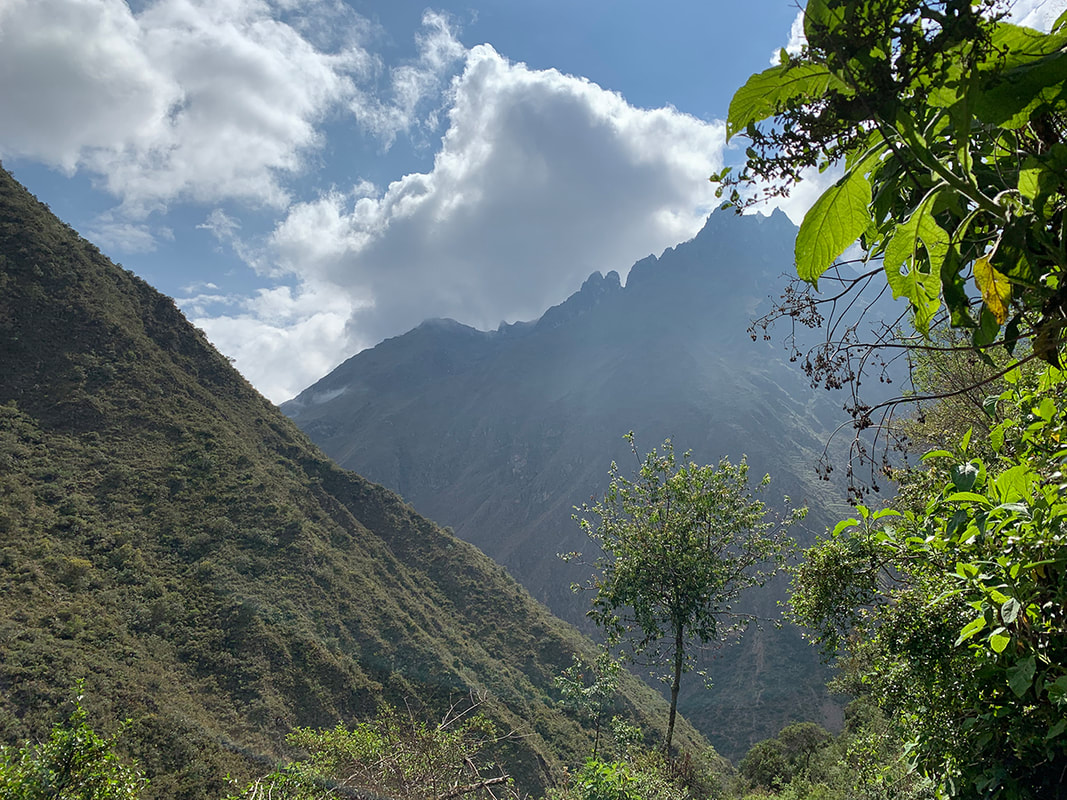

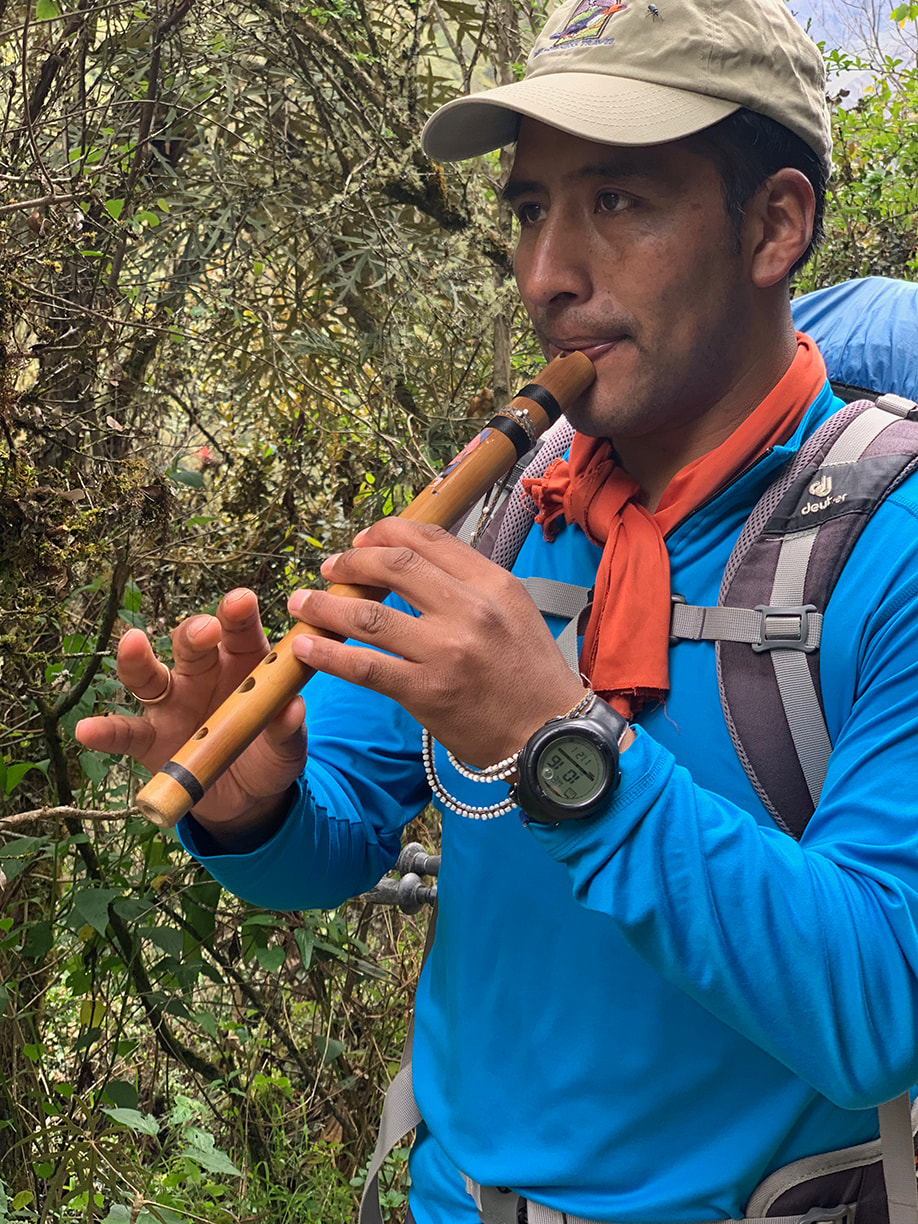









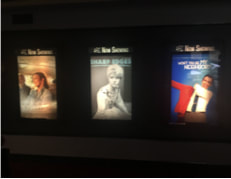
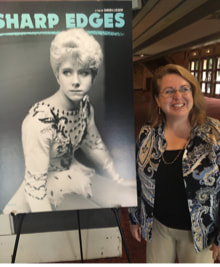

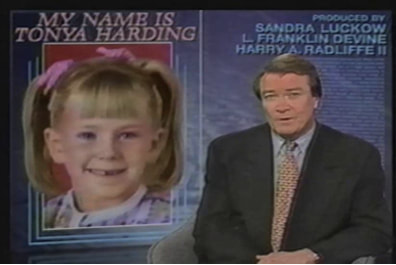











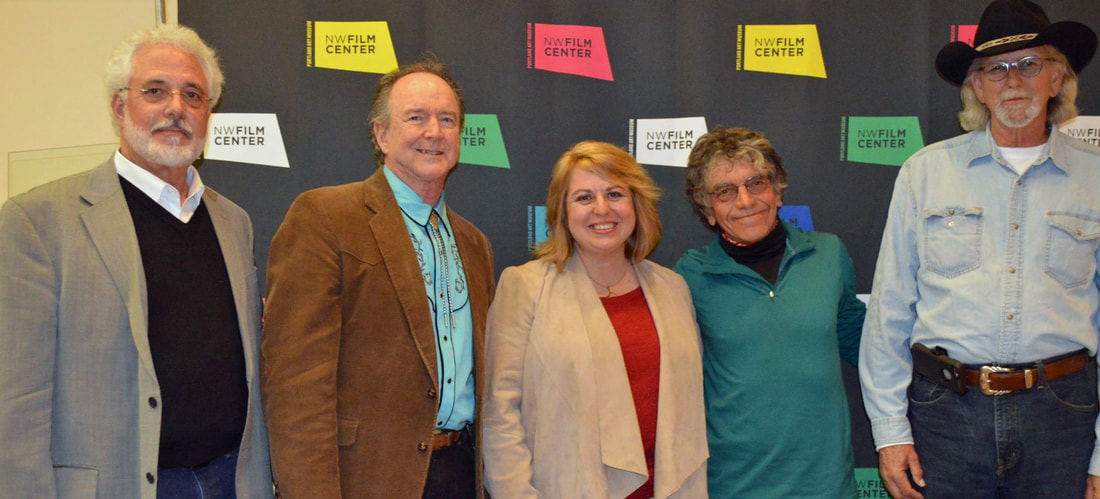




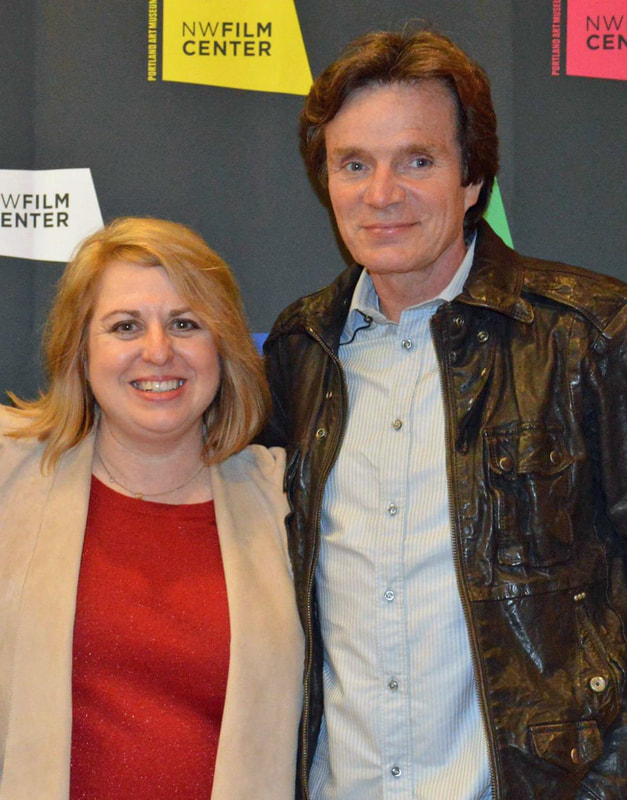



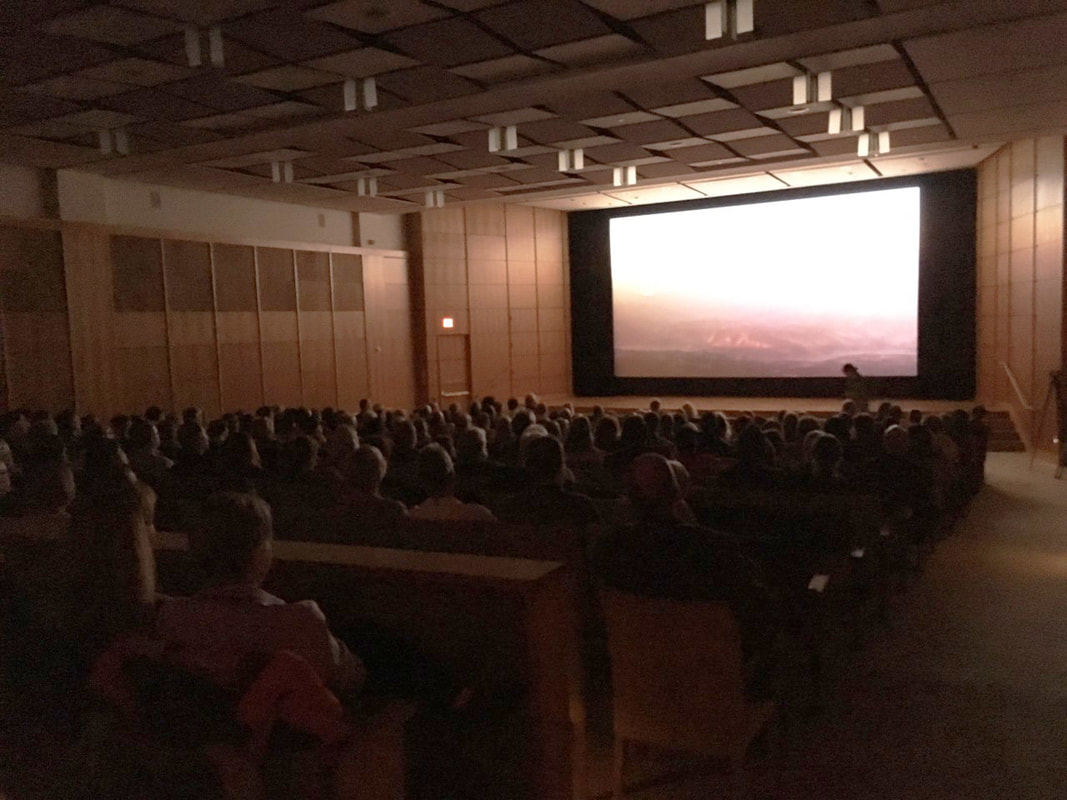

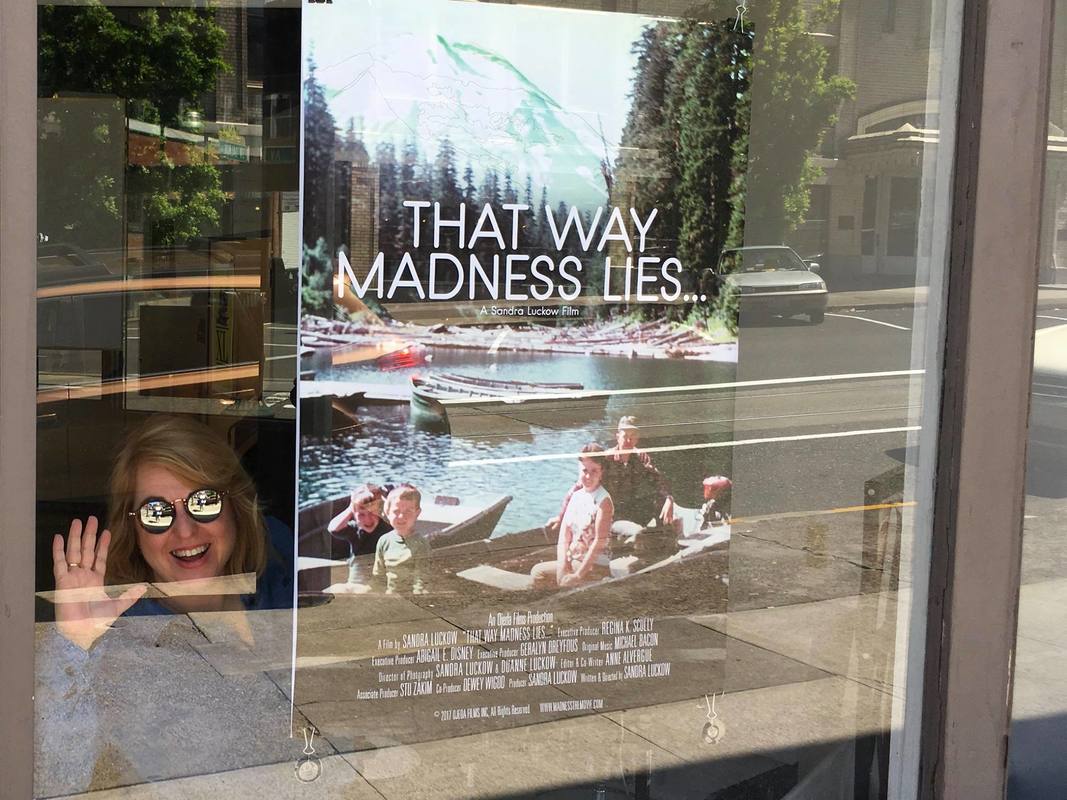








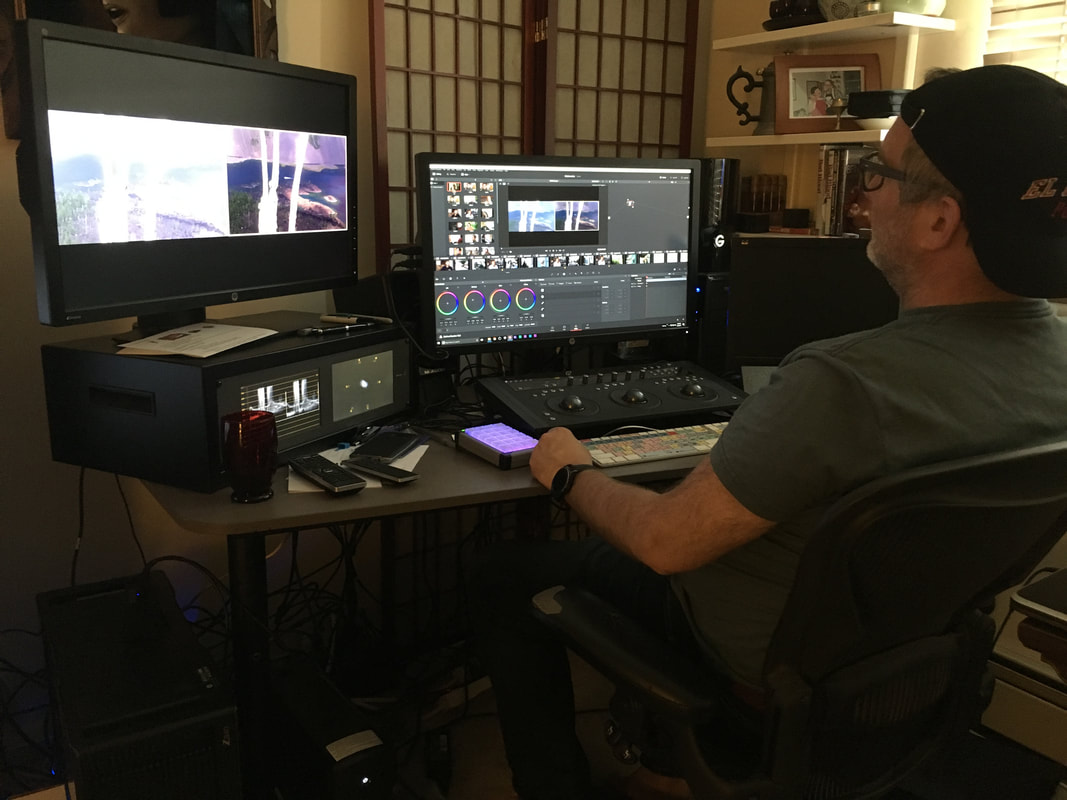

 RSS Feed
RSS Feed












